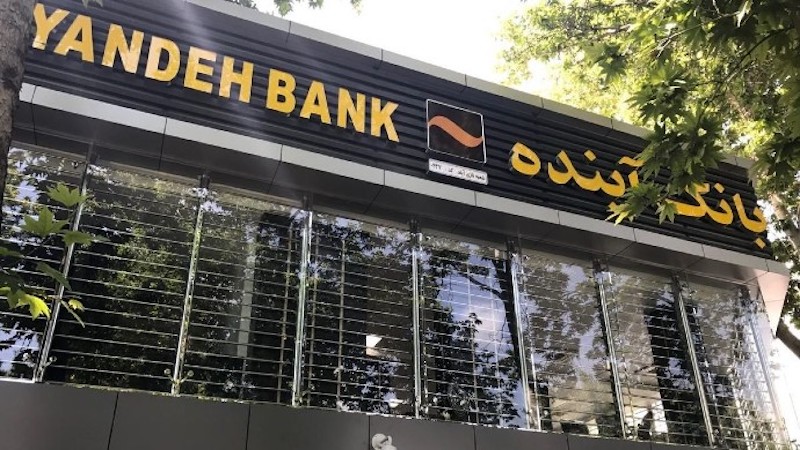In May 2023, the Iranian regime’s Supreme Leader Ali Khamenei was forced to admit to a “seven-headed dragon of corruption” plaguing his regime, yet quickly added, “Whoever says corruption has become systemic is talking nonsense!” He repeated this hollow denial in June 2025, insisting that “systemic corruption does not exist in the Islamic Republic.”
Today, the catastrophic collapse of Ayandeh Bank has turned these claims into a mockery, proving that corruption is not a flaw in the clerical regime but its very foundation. The bank’s failure is not an isolated incident; it is a perfect mirror reflecting the institutionalized plunder orchestrated by the highest echelons of power to pillage the wealth of the Iranian nation.
The staggering scale of the plunder
The sheer scale of the Ayandeh Bank scandal, as revealed by the regime’s own state-run media, is breathtaking. In a report on October 27, the Jomhouri-e Eslami newspaper laid out the devastating figures. The bank has a debt of 7,170 trillion rials to other banks and has taken 3,000 trillion rials in overdrafts from the Central Bank. In the first nine months of 2024 alone, it registered 1,000 trillion rials in losses, contributing to an accumulated loss of 5,000 trillion rials—a figure 315 times its initial capital.
The bank’s total liabilities have reached a mind-boggling 10 quadrillion rials (that’s a 1 with 16 zeroes behind it). This is not just an abstract number; it has a direct and devastating impact on the lives of ordinary Iranians. According to the same state-run newspaper, this single corrupt entity is responsible for approximately 7% of the country’s inflation, meaning “Ayandeh Bank alone has made every Iranian family 7% poorer than the previous year.”
What was stolen from the Iranian people
To put this colossal theft into perspective, state-affiliated economist Hossein Raghefar explained on October 25 what this plundered wealth could have provided for the nation. With the funds looted through Ayandeh Bank, the regime could have “built 120 advanced specialty hospitals” across the country. Alternatively, it could have established a “comprehensive rail network connecting Tehran, Mashhad, Shiraz, Isfahan, and Tabriz.” Instead, this wealth vanished into the pockets of the ruling elite, while Iran’s infrastructure crumbles and its people are denied basic healthcare.
The ‘institutions of power’ behind the theft
The perpetrators of this looting are not rogue actors but the regime’s core power structures. The Jomhouri-e Eslami newspaper explicitly admits that the force behind this bank and others like it are “institutions of power.” These entities are granted massive loans, which they never repay, and become so powerful that they can commit all forms of economic corruption with impunity. The paper concludes that “mafias emerge from these cracks… and prey on the people like a scourge.”
This “infection,” as the newspaper calls it, is now spreading to Bank Melli, Iran’s national bank, threatening a system-wide collapse. It is a clear admission that the entire financial system, including the Central Bank, is complicit in a scheme of institutionalized theft.
A system rotten to the core, beyond reform
The facts surrounding Ayandeh Bank utterly demolish Khamenei’s fraudulent denials. The regime’s own experts and media outlets have painted a clear picture of an economy hijacked by unaccountable, state-backed mafias.
As Raghefar bluntly stated, “As long as the spiral of growing corruption exists in the economic system, we have no solution for improving the economy.” His damning conclusion is that “to eradicate corruption, the governing institutions must be removed from the economy.”
This is an admission from within that the problem is the regime itself. The Ayandeh Bank scandal proves that corruption is the lifeblood of this theocracy. There is no path to reform. The only solution for the people of Iran to reclaim their stolen wealth and secure a future of prosperity is the complete overthrow of this corrupt system of plunder and tyranny.
